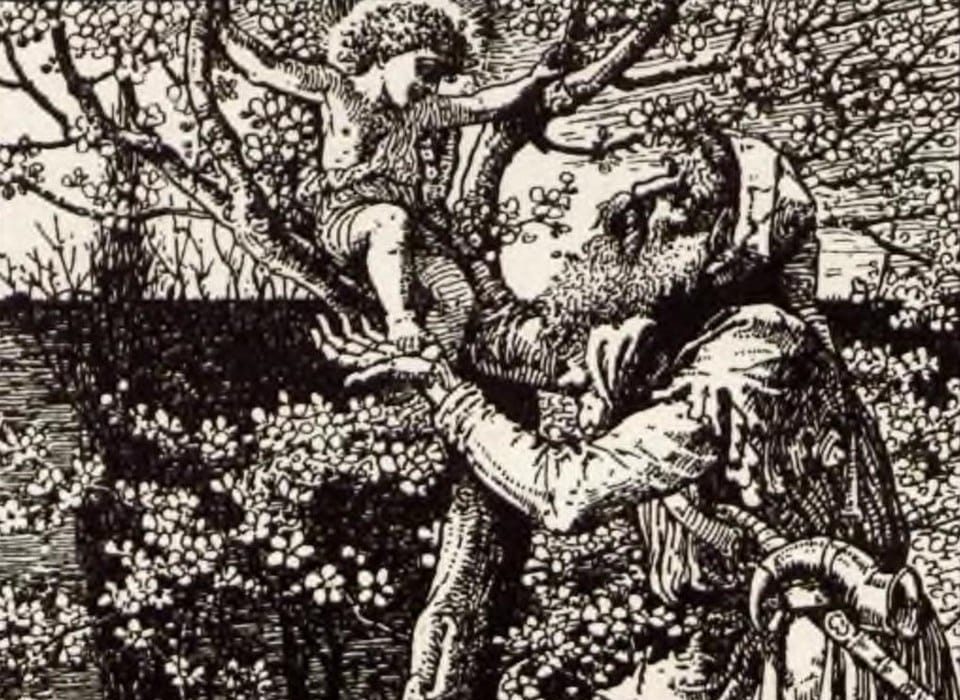A violent plague crippling society has been a horrific premise in fiction for a long time. In reality, Bird flu, swine flu, Ebola, and Covid-19 were all very real disease-related issues that mirrored fictional illness. In Stephen King’s The Stand, there is a great deal of misery when his disastrous flu attacks society. However, in this post, we are going to set aside the plot-related elements of the novel(mostly), and instead focus on a subject that comes from one of the most interesting characters in the book—The Trashcan Man. As such, we are going to talk about Cibola, or the Seven Cities of Gold.
A Brief Synopsis of the Novel
The plague in Stephen King’s disaster-novel The Stand (1978) wreaks a great deal of havoc on society. When it’s all said and done, it reduces the population from 99% to merely 1% in only a month. The survivors, climbing their way out of the apocalypse, find themselves plagued by peaceful/horrid dreams. These dreams are of an old woman who calls herself Mother Abigail or the dreams feature the supernaturally evil Randall Flagg. Mother Abigail instructs them to venture to Hemingford Home, Nebraska, for a new start. But Flagg is everywhere and goes by many names—The Dark Man, The Midnight Rambler, Old Creeping Judas, or (my personal favorite): The Walking Dude. In other books, he is known as Walter Padick (his supposed birth name) and Walter O’Dim.
Randall Flagg and His Followers
Flagg is a nefarious villain, one of magic and foresight. He is capable of killing people with the snap of his fingers (or sending flying electric balls of light). And, he can travel vast distances in little time. He also has a great aptitude for choosing his followers, which may be a critical flaw. One such follower is Lloyd Henreid, a murderer and born tagalong. Flagg, The Walking Dude, releases Henreid shortly before he starves to death on a maximum security prison block. Of course, it wouldn’t be Stephen King if Henreid had not already turned (slightly) cannibal for survival.
But perhaps the most enigmatic character in the novel is that of The Trashcan Man. Donald Merwin Elbert. Trash, as he is known mostly throughout the book, is mentally disturbed. He lives to watch the world burn (literally). His youth was plagued by bullying and typical nastiness at his odd behavior. This behavior was ostensibly inherited through his father’s genes. His father, gunned down by the local Sheriff, shared his pained psychology. Trash would later spend time in Terre Haute, Indiana, where he received electroshock therapy.
After the plague, Trash is on a mission to find The Dark Man, who resides in Las Vegas. Flagg’s society has established itself there and the Trashcan Man travels to find him.
King writes of this journey:
“He came staggering and flapping up a long upgrade, the heat of the sun stewing his stomach and baking his brains. The interstate shimmered with reflected radiant heat. He had been Donald Merwin Elbert once; now he was Trashcan Man forever and ever, and he beheld the fabled City, Seven-in-One, Cibola.”
A paragraph later: “He stood, swaying in his rags, looking down at Cibola, the City that is Promised, the City of Dreams.”
What is Cibola?
Cibola, or the Seven Cities of Gold, was a 16th-century legend that hinted at the existence of literal lands of gold. Rumors of these cities existed. Some sources state that they were, “somewhere in the southwest of North America” and could be “comparable to the better-known mythical city of El Dorado” (Mark).
In The Stand, and in Trash’s brain, the city of Cibola—not many cities but just Seven-in-One—exists in the Mojave desert and would, of course, be the most sought-after place in the world, as not only was it a land of gold and promise, but the lair of his master, Flagg. My life for you!
Additionally, the sojourn to Hemingford Home, which would relocate to Boulder, Colorado, or even the voyage to Las Vegas, acts as a journey for the characters in the novel, much in the same way Spanish explorers ventured to find a land of gold to fund armies and warfare. In the novel, warfare and destruction of the same variety (total) would be inevitable. Trashcan Man’s sole purpose, as instructed by Flagg, was to find and retrieve the Old World weapons (guns, mines, and bombs). Then, he would bring them back to Vegas and they would use them against the Boulder Free Zone.
In reality, attempts to find the Cities of Gold were fruitless, as even in 1540, Antonio de Mendoza, the viceroy of Spain, sent Francisco Vazquez de Coronado “to search of the cities,” but he only found “Indian settlements—including the Zuni Pueblos” (Britannica).
Such is the way of legend, and even though Trash believes in his discovery in the novel, he has a momentary realization that can only be likened to the Spanish explorers of the 16th century: “What if Cibola had been a mirage?”
Conclusion
Whether you are critical of the end of Stephen King’s The Stand or not, it is a book of wonderful invention. It does so much legwork in the way of establishing the world. And, frankly, before the characters hit Hemingford Home, Nebraska, the book is startlingly horrifying and beautiful in the way one would expect and desire of post-apocalyptic fiction. With that in mind, the addition of elements like Cibola and the Trashcan Man himself creates a lived in world where such interesting machinations can fall in line easily. The fact that Cibola is layered in mythos and actually relates to the story’s theme of finding home in a chaotic world. Similarly, King has dabbled in many interesting themes over the years, but perhaps never one so fruitful with mythology.
Works Cited
Editors. “Seven Cities of Cibola.” Britannica.
King, Stephen. The Stand. Doubleday, 1978.
Mark, Joshua. “Cibola – The Seven Cities of Gold and Coronado.” World History Encyclopedia. May 11, 2021. Web. https://www.worldhistory.org/article/1754/cibola—the-seven-cities-of-gold–coronado/





Leave a comment